Description
Clove,
Syzygium aromaticum, is a monoecious (both male and female flowers on the same plant) evergreen tree in the family Myrtaceae grown for its aromatic flowers. The many branches of the tree are semi-erect with smooth oval shaped leaves. The branches end with a 3–4 flowers near the tip with one terminal flower and the others opening below it. The leaves, flowers and bark all have a distinct smell. The clove is the unopened flower buds. The tree grows 8–15 m (26–50 ft) tall and can live to be more than 100 years old. The clove tree may also be referred to as tropical myrtle and are native to the Molucca Islands.

Clove tree
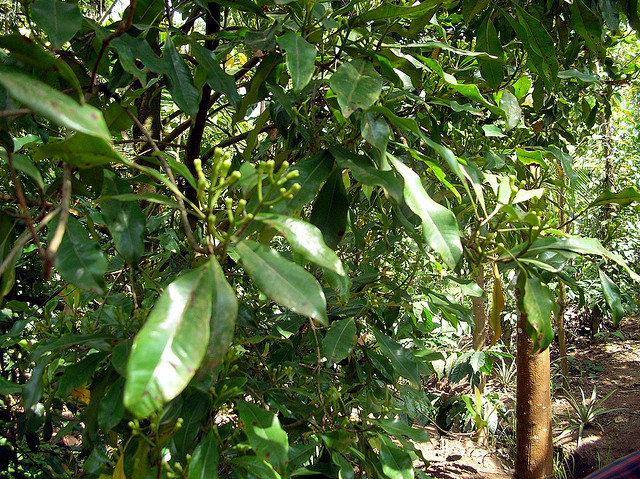
Clove foliage
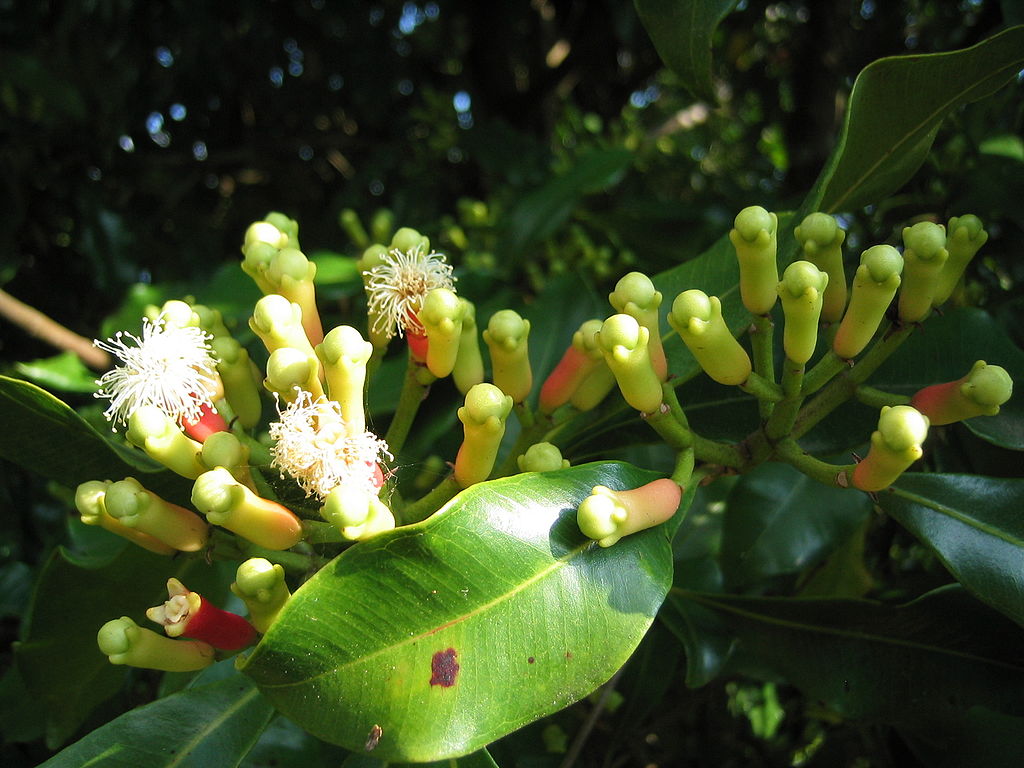
Clove flowering
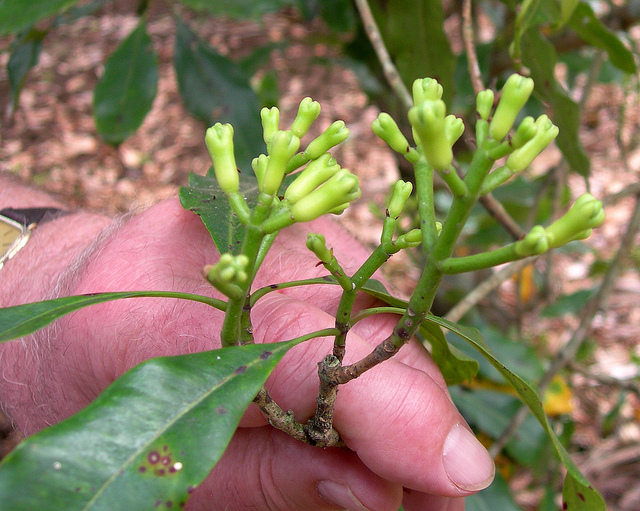
Clove buds
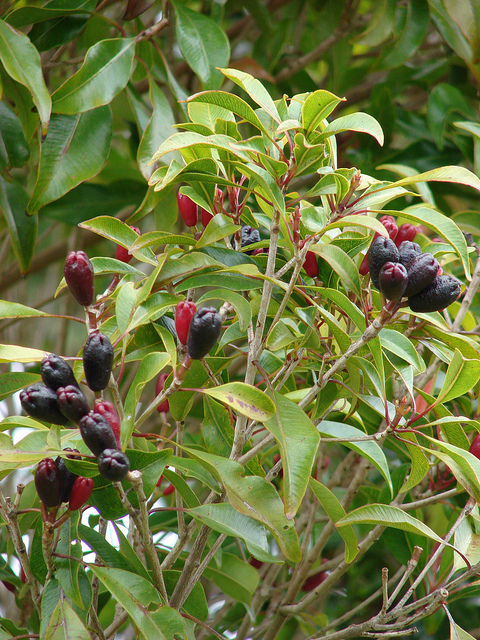
Clove fruits on the tree

Clove leaves

Clove buds

Clove fruits
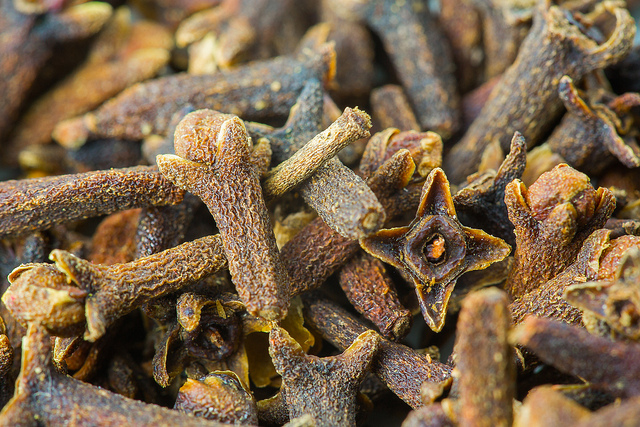
Dried buds
Uses
The vast majority of commercially cultivated cloves are used by the tobacco industry to flavor cigarettes. Cloves are also used commonly as spices, either in their whole form or after first grinding into powder.
Propagation
Basic requirements Clove trees require a warm, tropical climate with an average rainfall of at least 1500 mm per year. Clove trees are very susceptible to stress. Areas that undergo a dry season are good for flowering but the tree must be planted in an area with deep, fertile soil to limit water stress. Clove trees grow optimally at temperatures between 16 and 27°C (65–80°F) in rich loamy, well draining soil.
Propagation Clove is commercially propagated from seeds which are planted soon after harvest. Seeds should be collected and extracted from the fruits of healthy mother plants exhibiting desirable characteristics. The seeds are extracted by soaking the fruits in water and peeling the skin from the fruit. The seeds can be planted in prepared nursery beds or polyethylene bags containing a mixture of soil and aged manure and should be planted to a depth of 2 to 5 cm (0.8-2.0 in) and spaced 12 to 15 cm (4.7-5.9 in) apart. Germination usually occurs within 1 to 6 weeks. The seedlings should be shaded to protect them from harsh sunlight. The seedlings should be kept moist through regular watering and can be transplanted when they reach at least 30 cm (11.8 in) in height. The seedlings should be hardened off by exposing them to increasing amounts of sunlight before the are transplanted to the field.
Transplanting Young clove trees should be planted in pre-dug pits which are approximately 60 × 60 ×60 cm (24 × 24 × 24 in), or large enough to accommodate the root ball. The recommended spacing for clove trees is 8 m (26 ft) but closer spacings are commonly used. Trees planted in the field should be provided with temporary shading to alleviate stress. Shade can be provided through intercropping with other crops such as banana, cassava or coconut but trees such as Gliricidia are also used as these can be pruned to alter the amount of light reaching the cloves throughout the year.
General care and maintenance Once the temporary shade plants are removed, the plantation should be kept free from weeds by weeding once or twice each year or by applying a layer of mulch around the trees. Mulch helps prevent the roots being damaged by the physical removal of the weeds. Trees may require additional irrigation during dry periods to prevent them becoming stressed which harms their production. The trees should also be provided with nutrients in the form of fertilizer or manure. The composition and amount of fertilizer required is dependent on the region and soil type.
Harvesting The complete inflorescence (flower) should be picked just before the first buds open to ensure maximum size and oil content of the buds. The harvest is often conducted over 3 to 8 pickings during the season as buds mature. After harvesting, the buds are laid out to dry in the sun for several days.

Clove nursery bed
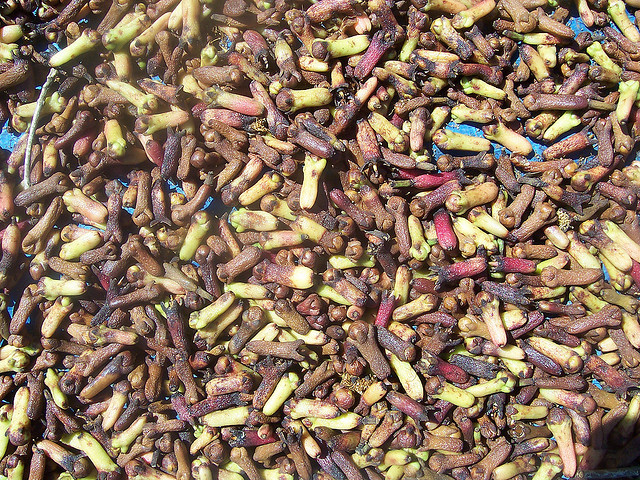
Cloves laid out to dry, Bali, Indonesia
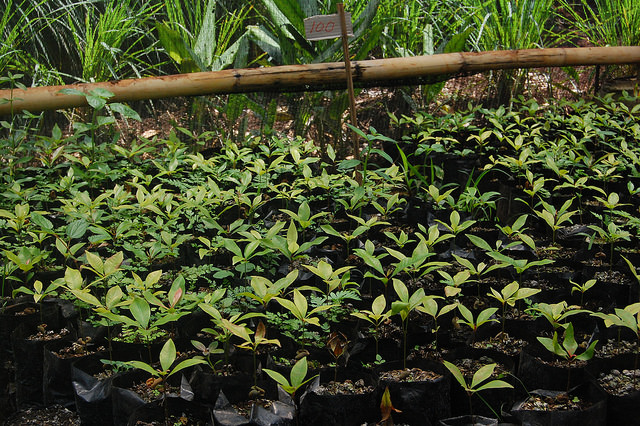
Clove nursery

Cloves laid out to dry, Bali, Indonesia

Cloves laid out to dry, Bali, Indonesia
References
CABI Crop Protection Compendium. (2008). Syzygium aromaticum datasheet. Available at: http://www.cabi.org/cpc/datasheet/52412. [Accessed 11 November 14].
Paid subscription required. KAU Agri. (2013). Clove (
Syzygium aromaticum).
Comments
Post a Comment